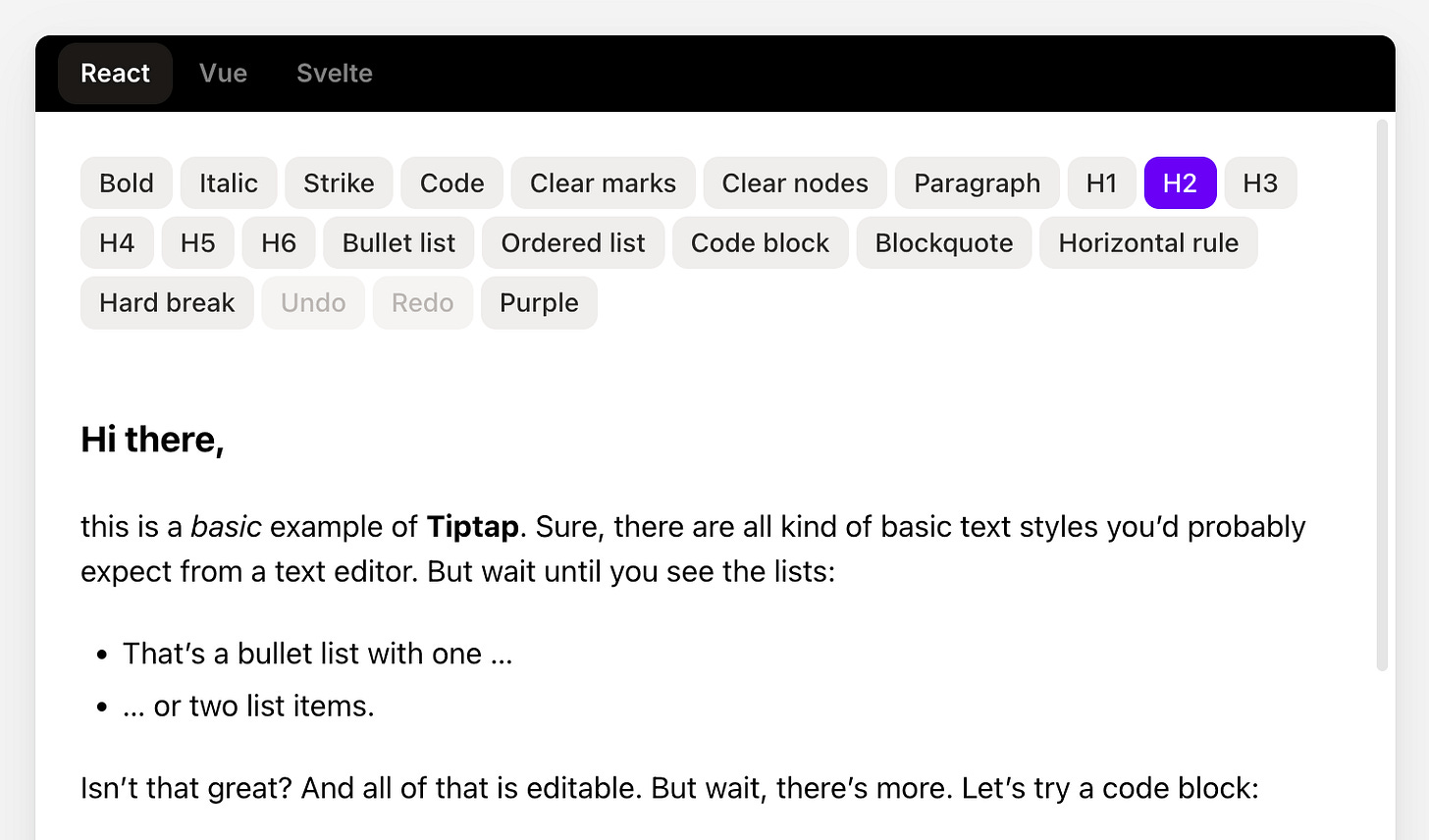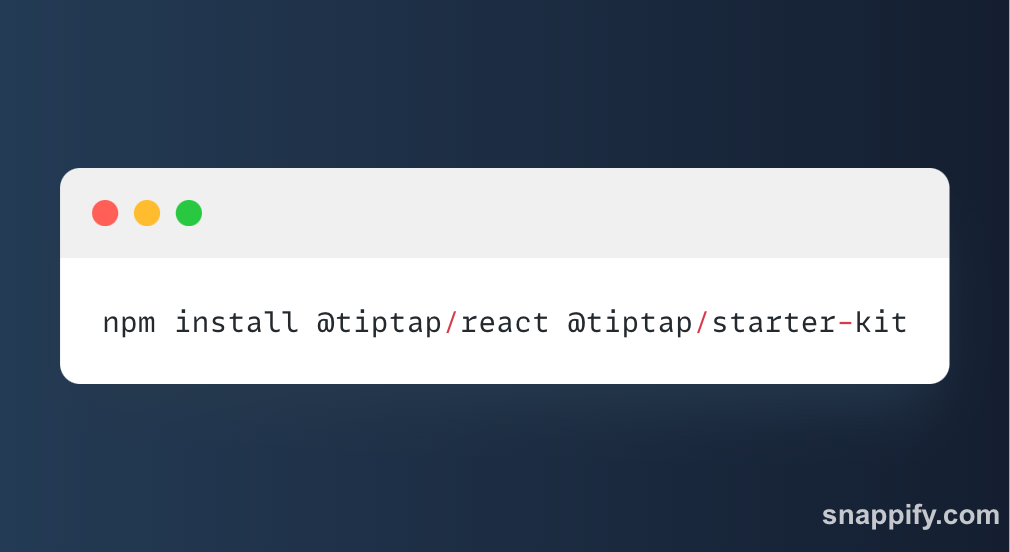Building a Rich Text Editor with Tiptap and React/Next.js
When creating feature-rich web applications, adding a seamless and customizable text editor is a key requirement. For a recent project, I needed to integrate a world-class note generation and transcription tool for doctors. After exploring several options, I chose the Tiptap library for its flexibility and ease of integration. In this blog, I’ll walk you through why Tiptap stands out and how to set it up in React or Next.js.
Why Tiptap?
Tiptap is a highly extensible rich text editor built on top of ProseMirror, offering an easy way to customize your text editor’s features. It allows you to extend its functionality with custom nodes, input rules, commands, and extensions, providing a highly flexible framework.
Tiptap is trusted by companies like Productboard, Linear, and Superhuman, making it a proven choice for applications that require a robust and extensible text editing experience.
Key Benefits:
• Headless: Tiptap doesn’t force you into any specific UI, so you can build an interface that fits your design perfectly.
• Extensible: Easily add custom commands, extensions, and behaviors.
• TypeScript support: Built-in support for TypeScript provides type safety for smoother development.
Setting Up Tiptap with React/Next.js
Let’s walk through how to integrate Tiptap in a Next.js project and enhance it using Tailwind CSS for styling.
1. Install Tiptap and Dependencies
First, let’s install the necessary packages:
2. Create the Rich Text Editor Component
Now, let’s create a component that initializes the Tiptap Editor with some basic configuration. Here’s a basic setup in React:
3. Add Tailwind CSS for Styling
Next, we’ll use Tailwind CSS for better typography and styling. The prose class from Tailwind’s typography plugin gives a clean and beautiful layout to the content.
In your tailwind.config.js:
4. Advanced Features: Adding Custom Extensions
One of the reasons to use Tiptap is its extensibility. You can create custom extensions or use the built-in extensions for various rich text features such as tables, mentions, or highlighting text.
Here’s an example of adding the highlight extension:
Final Thoughts
Integrating Tiptap in a React or Next.js project is quite straightforward, and its flexibility makes it ideal for any advanced rich text editing requirements. With features like headless architecture, customization, and an ever-growing ecosystem of extensions, Tiptap offers an excellent developer experience.
Future Enhancements
In my current project, I plan to enhance the Tiptap editor by adding:
• User authentication
• Cloud synchronization for persistence
• Custom drag-and-drop functionality
Check out the Tiptap documentation to explore more customization options.








